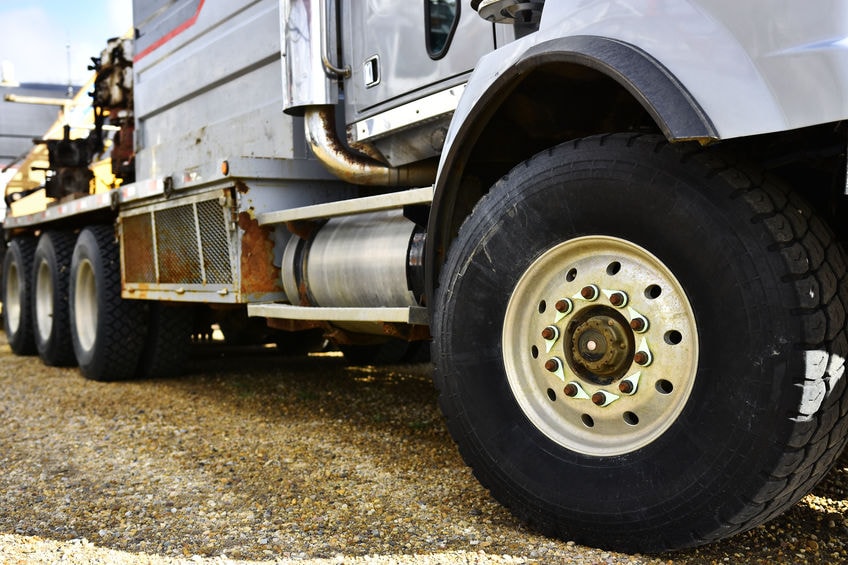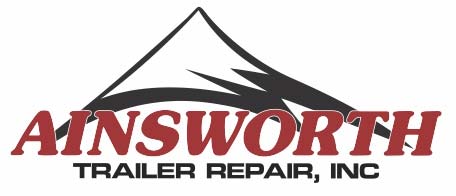
Successful air brake system maintenance relies on more than routine inspection. When you discover issues, adjustments and timely repairs ensure your tractor-trailer will remain roadworthy. To help you keep your rig on the road, the fleet trailer maintenance pros at Ainsworth have assembled this basic guide to air brake system care.
Ainsworth Air Brake System Maintenance Checklist
- Reservoir Tank
Clean air and adequate pressure are integral to proper air brake system function. Verify pressure is 80psi at a minimum. Be sure to regularly drain all moisture (and sludge) from air brake reservoirs. Open drain cock and remove all condensation. Close the drain and inspect the reservoir for damage or wobble. Connections should be tight and brake lines securely supported. Neglecting this chore in cold weather can result in freezing and obstruction in lines and valves. - Gladhands
Verify proper operation without obstruction. Spray gladhands and mounting with soapy water, checking for leakage with tractor/trailer connected and air in the system. Glad hands should be clean and free of grease and oil. Replace seals annually or when the condition is poor. - Brake Lines & Hoses
Check brake lines and hoses for cracks, breaks, and chafing, replacing deteriorated components immediately. Ensure connections are tight. CAUTION: Never weld near nylon tubing. Remove/reinstall when possible to prevent heat damage, or carefully shield. - Service & Spring Brake Chambers
Inspect air chamber clamp bands and mounting nuts for tightness, and brake chambers for physical damage and leaks. CAUTION: Never attempt air brake system maintenance yourself. Special tools and techniques are necessary to avoid serious injury. - Air Valves
Check air valves for leaks and the need for air system repairs . Replace when necessary with new or rebuilt valves. - Brake Lining
Check brake lining thickness, replacing when worn or coated with oil, grease, or debris. - Brake Drums
Inspect brake drums for mud or rust accumulations, cleaning when necessary. Replace cracked/broken drums immediately. - Anti-Lock Brake System (ABS)
ABS systems vary. Contact your ABS manufacturer for complete ABS maintenance instructions. - Electronic Control Unit (ECU)
Be on the lookout for both your dashboard ABS indicator lamp and the ABS indicator lamp on the side of your trailer. These indicate ECU malfunction affecting your ABS. - ABS Indicator Lamp
Check your ABS lamp for proper function. You’ll find it on the driver’s side by the rear marker lamp, denoted by the letters “ABS.” This lamp should not be ON when your tractor-trailer is moving over four mph, or come on and stay on if you apply brakes when the vehicle is in motion. These situations indicate a malfunction and the need for service ASAP to safeguard braking performance and proper ABS function. Some indicator lamps provide blink codes, blinking on and off to identify problem areas. - Slack Adjuster (Self-Adjusting)
Refer to your vehicle’s manufacturer recommendations for complete details on inspecting and maintaining your slack adjuster.
Are air brake maintenance needs putting pressure on your schedule? Get back on track with the help of Ainsworth Trailer Repair today.



